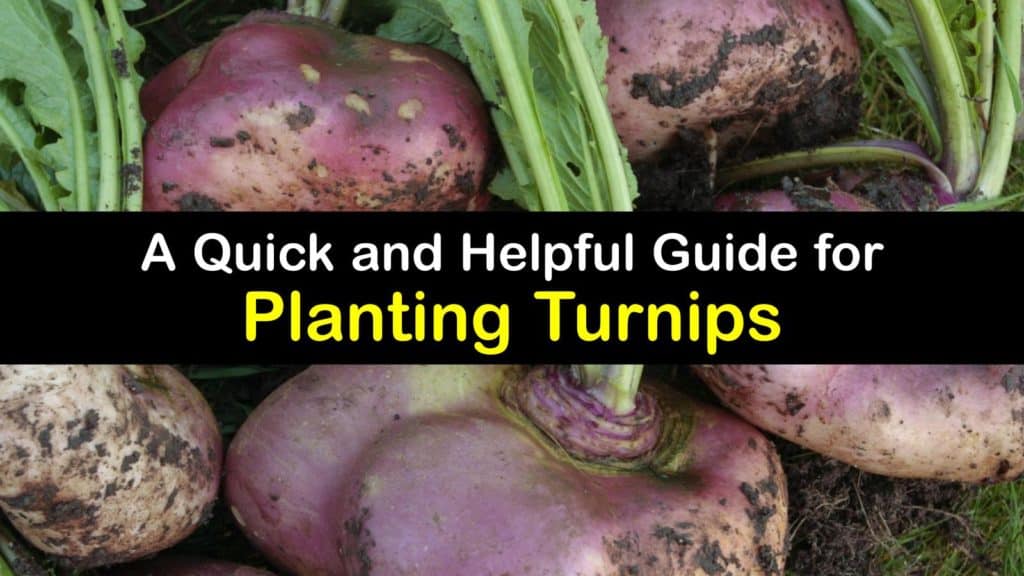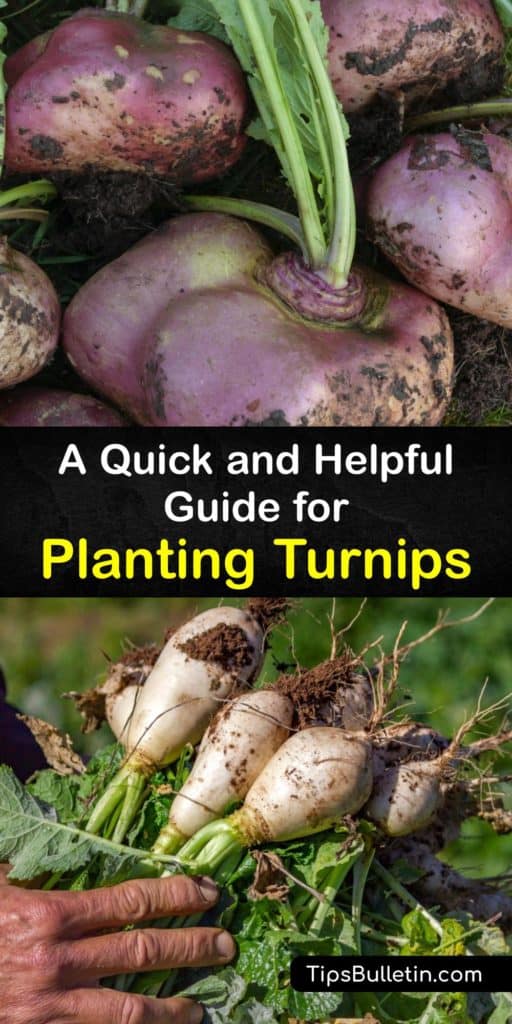Gardening is a balancing act where you have to find the perfect vegetables that pair well with one another in a confined space. Turnips are one veggie that many people overlook when planning out their garden beds for the growing season. Figuring out how to plant turnips is a great way to explore in the kitchen and work with something you probably haven’t tried before.
While planting turnips might not seem like the most thrilling root vegetables to garden with, there is a lot to know about them to have success in your garden.
Things like lighting, companion plants, and how far apart to plant turnips all play a role during your growing season. Even if you’re more likely to use root crops like potatoes and carrots, don’t be afraid to take a chance on turnips as your cool-weather crops this year.

About Planting Turnips
Planting turnip seeds can be a little scary and exciting at the same time. If you’re still not sold on trying to grow turnips, it might help you to learn a little bit more about these plants and their different cultivars.
Turnip roots are typically a fall crop and are grown as either an annual or biennial. Also called Brassica rapa, these plants have hairy turnip greens on top of a bulbous purple and white body. Turnip greens seeds produce small yellow flowers and have many different cultivars.
While turnips may not seem like the most exciting vegetables, they have a rich history for animal and human use. Turnips date back to Roman times and were a well-established part of the human diet.
They likely originated in Western Asia or Europe, and wild varieties of turnips are still found in these areas today.

These crops saved many people from starvation, especially during WWI when Germany suffered from a failed potato harvest. Most of the country turned to turnips, rutabagas, and radishes to feed themselves. There is little difference between turnip and rutabaga regarding cooking and taste.
Turnips have been considered food for the poor, but we should have a much deeper appreciation for them. The entire plant is edible, and several cultivars adapt well to many different growing zones.
Turnip Cultivars
Take advantage of a cool-season garden by growing these small, tasty roots. Turnip plants are not only easy to grow, but they taste delicious and are used in many ways.
Seven Top
Seven Top turnips are great if you’re more interested in the turnip greens than the roots. The root plants put all their energy into the leaves and make a delicious salad rich in vitamins and minerals.
Purple Top White Globe
This type is one of the best overall cultivars. These turnips produce large, sweet roots that reach up to six inches in diameter. They are ready to be harvested after only 45 to 65 days, and the large roots go a long way in the kitchen.
Tokyo Cross
Tokyo Cross is a hybrid turnip that has won an All American Selection award. They are ready to be harvested during any stage, regardless of how small or large their roots are. They have a perfect globe shape and smooth surface. The flesh is white, sweet, and crisp.
Shogoin
Shogoin is another excellent turnip cultivar to work with. These classic Japanese turnips are used for both the roots and the tops and they mature quickly. Germination happens in as few as four days. They are great for pickles, salads, soups, or braised.
How to Plant Turnips
If you want to reach the end of the growing season, take advantage of the cool weather and start growing these tasty roots. When all of your summer crops are coming to a close, you can count on turnips as your new cool-season crop. Learn what to grow with turnips to repel insects and increase disease resistance.
How Far Apart to Plant Turnips
Turnip plant spacing is critical because you don’t want them to be so crowded that they won’t grow. You also don’t want them to be so far apart that you waste garden space.
The best way to plant turnips is to sow your turnip seeds one to two inches apart with rows 18 to 30 inches apart. Once they grow a little, thin them to four to six inches apart.
Propagating Turnips
Planting turnips starts by sowing seeds directly into well-draining soil. Find an area with full sun or partial shade, although partial shade is better. Do you know when to plant turnip seeds? Plant the seeds outside once the soil temperatures reach 40°F.
Because they enjoy cool weather, they won’t mind some light frost. However, we still recommend waiting until just before the last frost occurs in the early spring. Too much hot weather could encourage them to start bolting early.
For a fall harvest, plant them in the late summer once the hottest parts of the season begin cooling off, but before the first hard freeze of the season.
If you live in a hardiness zone with a long and cool growing season, try succession planting them every few weeks for a continuous crop. Keep the soil moist and rich with organic matter like mulch or compost.
Do your best to protect your turnip plants from pests and diseases. Save them from flea beetles, cabbage maggots, and aphids using floating row covers. Prevent clubroot and other diseases by practicing crop rotation and refraining from overwatering your crops.
Harvesting, Storing and Cooking with Turnips
When to harvest turnips is ultimately up to you. You may harvest them earlier for the greens or later in the season, depending on how large you prefer the bulbs.
To harvest turnips, loosen the dirt around them and wrap your hand around the base of the greens before pulling them straight out of the ground.
Store harvested turnips in a cool basement, root cellar, or fridge. Once you’re ready to eat them, rinse them before turning them into a tasty dinner. We enjoy substituting mashed turnips for mashed potatoes. Use turnips instead of potatoes for fewer carbs and great taste.
Prepare your ingredients and bring a large pot of salted water to a boil over the highest heat setting. Add the diced turnips once the water starts to boil and allow them to cook for 20 to 30 minutes.
Check that they’re cooked by poking them with a fork to see if they are tender throughout. Drain the turnips before putting them back in the pot. Mash them with salt, pepper, butter, and sugar.
Knowing how far apart to plant turnips and how much water they need is necessary for their happiness, yet turnips couldn’t be an easier plant to work with. If you’ve had hesitations about them before, we hope this article has convinced you to give them a try next year.

If learning how to plant turnips has inspired you to grow them in your garden beds, share this quick guide on planting turnips on Facebook and Pinterest.